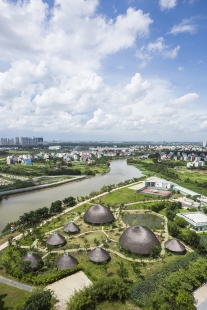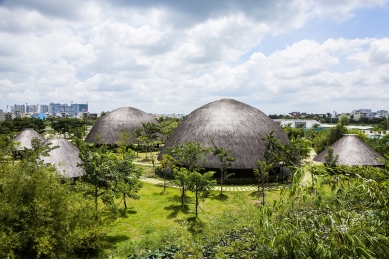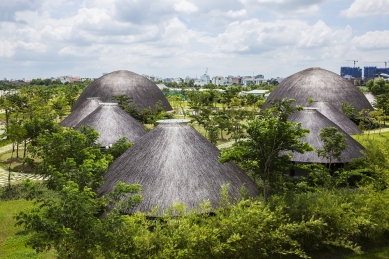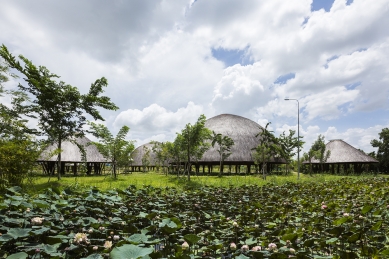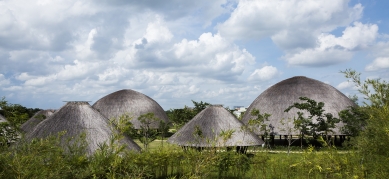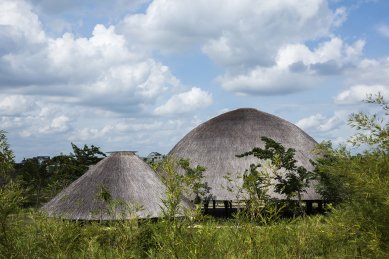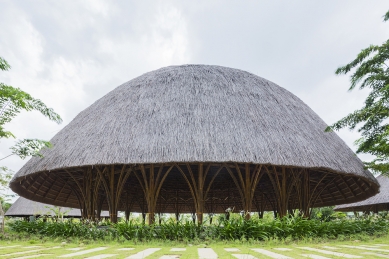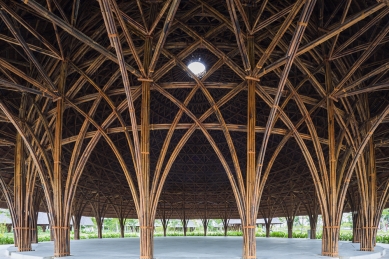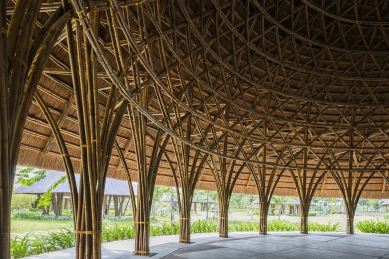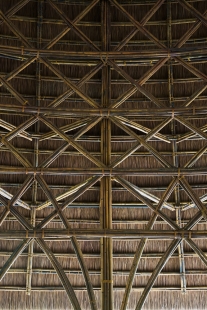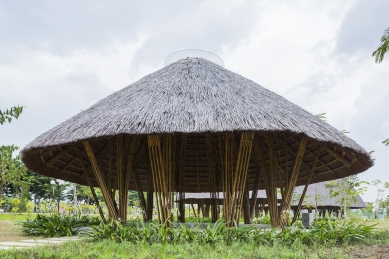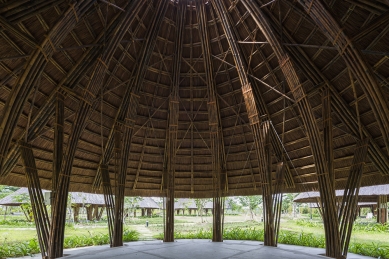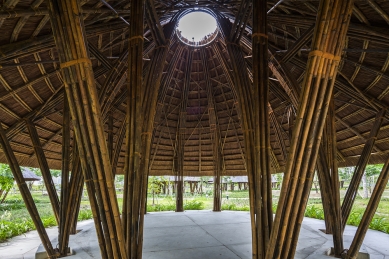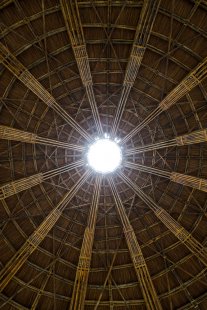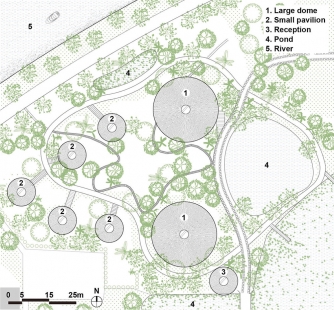Being adjacent to the newly emerging center of Ho Chi Minh City, Diamond Island is a group of condominiums on an islet on Saigon River. To make the best use of the empty space of a gradual development program, this multifunctional community center is designed not only for local residents, but also for foreign tourists brought by boats from the city center. Eight large and small bamboo pavilions are scattered throughout a park with rich vegetation along the river. The pavilions are used for various events such as parties, banquets, promotions conferences, and are also planned to be restaurants in the future.
Two large domes are created by pure bamboo structures and measure 24m diameter and 12.5m height. Inspired by a traditional bamboo basket sheltering fowls, the structure is made by skilled workers who weave each piece of bamboo on site. Six smaller pure bamboo pavilions are shaped like umbrellas with 11m diameter and 7m height. The umbrella structures consist of twelve prefabricated structural units assembled, aiming at efficiency of construction.
The large pavilions are double layered dome structures. The outer roof layer of thatch overhangs from the inner basket-like structure to create deep eaves, protecting the whole bamboo structure from harsh sunshine and heavy rainfall. Regardless of the shrouding shape of the roof, the interior space needs no artificial lighting for daytime activities as a skylight and open periphery provide defused daylight. The skylight also functions to discharge hot air from the top of the dome as river breeze cooled by three surrounding ponds flows through the building.
Despite the application of several traditional construction methods, the project’s aim is not to reproduce the vernacular, but to create sustainable architecture suited to the present. In order to do this, systematization of production and construction of bamboo architecture is essential and, as a result, the project is a fusion of traditional folk art and contemporary architecture.


